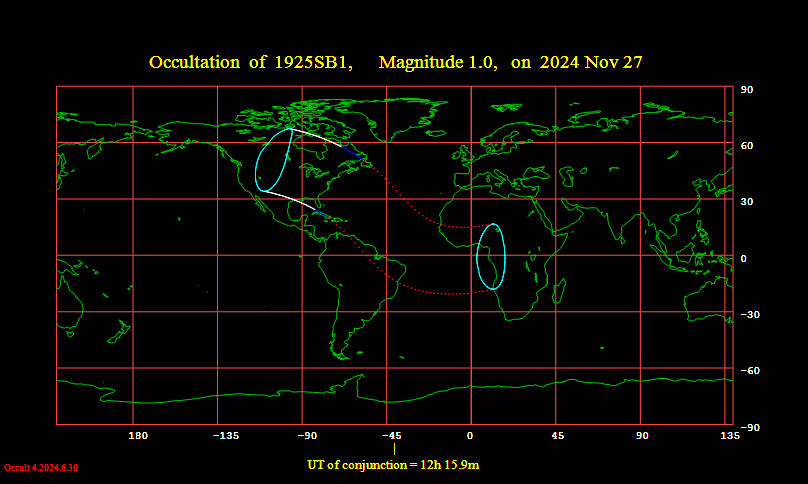One of the best bright star lunar occultations for 2024 occurs this week, as the Moon covers Spica.
Have you ever seen the Moon blot out a star? If the weather cooperates, early morning viewers across eastern North America have a chance to see a rare spectacle, as the crescent Moon occults (covers) the bright star Spica.
When to Watch
The event is centered on the early morning hours of Wednesday, November 27that 12:16 Universal Time (UT)/7:16 AM EST/6:16 AM CST. The International Occultation Timing Association (IOTA) has a list of ingress/egress times for select sites in the occultation footprint. The IOTA also has a more technical discussion of the event here. The Moon is a -13% illuminated, waning crescent (just four days from New) during the event, meaning that Spica will ingress on the daytime lit side, and egress along the nighttime dark limb of the Moon.
The 'Wow Factor'
It's a strange celestial scene: like during a total solar eclipse, you're standing in the shadow of the Moon… but in this case, it's 'cast' by +1st magnitude Spica… from 250 light-years away. Also known as Alpha Virginis as the brightest star in the constellation Virgo, Spica also holds the distinction of a contender for a nearby galactic supernova event in the far future.
Occultations are interesting and important to astronomers, as they give us a chance to analyze both objects involved. In the case of the star, we might notice the teeny angular diameter as it winks out, perhaps briefly revealing a faint secondary companion. In the case of Spica, its apparent size is 0.906 milliarcseconds, and is a spectroscopic binary with a close companion star in a close four day orbit.
Going to the Grazeline
An occultation can also help to map out the jagged limb or profile of the Moon. This works as the star blinks in and out of view. Imagine the star playing peek-a-boo with mountain peaks, shining down lunar valleys. The southern grazeline to see such a spectacle Wednesday morning crosses Texas, New Mexico and Arizona and is not to be missed.
The 'Spica Cycle'
Spica is one of the four bright stars that lies along the path of the Moon in the current epoch. The other three are Aldebaran, Regulus and Antares. Like eclipses, these occur in cycles. The Moon covers the star once per every 29.5 day synodic lunation. This continues until the track of the Moon carries it slowly away. In 2024 into 2025, the Moon is also occulting Antares as well. Also, like eclipses, the track for occultations moves 120 degrees west in longitude from one event to the next.
Observing and Imaging
Spica is bright enough to track near the Moon right up into the bright dawn, just before sunrise. The event also lends itself well to video capture. You'll be able to easily see Spica disappear and reappear using binoculars… or even with just the unaided eye. The star will be much more prominent along the dark nighttime limb of the Moon.
In a slow-moving Universe, occultations give us a chance to see change occurring in a split second. Don't miss 'The Great American Occultation,' as Spica disappears behind the Moon Wednesday morning, and the celestial drama of the sky above us continues.
 Universe Today
Universe Today




